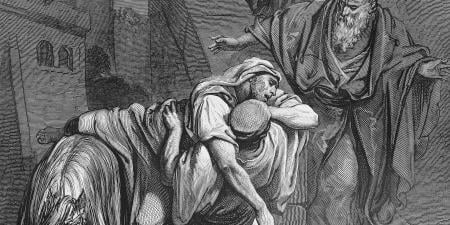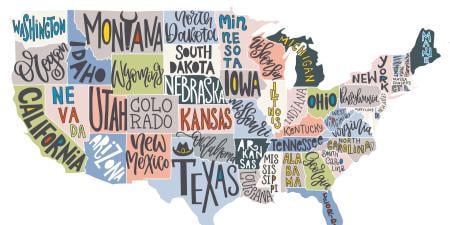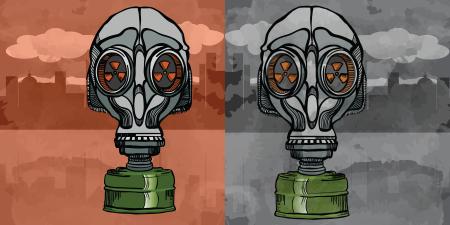Case
Marcus is a third-year internal medicine resident on the last shift of his emergency medicine rotation at a small hospital in the northeastern United States. The shift is unusually busy. A few hours into his shift, a critically ill woman is brought in to the emergency department with fever, cough, and hemoptysis. Her family reports that she was previously healthy but became sick rapidly about 2 days after she attended a large conference at a local hotel. One hour later, another ER patient describes similar symptoms. His wife reports that he became ill after attending the same business conference 4 days ago.
Marcus has not seen the patients but attends a staff meeting in which the attending physician discusses the possibility that the patients have pneumonic plague. The attending physician, Dr. Gattler, is suspicious of the possibility that Yersinia pestis may have been released at the hotel in which the conference took place.
"It's unlikely," he says, "but we can't rule it out. Until we can, we need to take the appropriate precautions. The terrorism response plan will be put into place, and I will notify the public health authorities immediately after we finish here."
Dr. Gattler asks Marcus, who has been trained in the terrorism response plan, to help with triage and identifying other potential patients.
"The patient in room 3 has fever and a cough," a nurse says, "no hemoptysis, but he's a young guy, and he looks really sick."
"Marcus," Dr. Gattler says, "go see that patient. I'll be there once I get a few more calls made. You know what you're doing, right?"
Marcus nods. He remembers everything from disaster preparedness training. It was only 2 months ago. At that time, though, he didn't imagine then he would actually be faced with a situation like this. Marcus knows this patient is ill, but he also knows that if this is pneumonic plague, he is putting himself at risk, and he may be quarantined after seeing the patient. It seems like a sufficient number of doctors and nurses are around to help anyway, and many more will be there in a few minutes. The patient in room 3 needs a doctor, but Marcus's wife and daughter also need him at home. "It seems like I shouldn't really have to do this as a resident anyway," Marcus thinks. "How can I be expected to put myself and my family at risk?"
Commentary 1
In The Plague, by Albert Camus, Dr. Bernard Rieux stays in his small city of Oran when it is quarantined with bubonic plague.1 He works long hours into the night lancing buboes and tending to the sick, while his wife is isolated in a sanitarium and his mother cares for his children. As an exemplar of the virtuous physician, he never gives a thought but to the fulfillment his professional duty.
Marcus, our third-year medical resident, worries about his family as he debates whether to see the sick young man with possible pneumonic plague. Marcus experiences both a conflict of interests (the patient's best interest in receiving appropriate medical care and Marcus's personal interest in staying alive) and a conflict of obligations (his duty to treat based on his training and his obligation to support his family). His wife and daughter need him, and he has obligations to them as a husband and father. Irrespective of whether he might subsequently die from the encounter, we know that he will likely be quarantined, and this will mean separation from his family for a period of time. We do not learn directly that Marcus is fearful about seeing the patient, but we can surmise that trepidation is contributing to his ambivalence. What should Marcus do?
The historical record may not be helpful as a guide.2,3,4 Physicians' responses to past epidemics have been variable: sometimes fleeing and other times staying in the face of danger. At certain times in history, determination of the physician's responsibility in an epidemic rested on political and economic exigencies, rather than solely the patient's good.5 Twenty years ago, the AIDS epidemic raised similar questions about what level of risk the physician should assume in service to patients with a dangerous disease.6 There were concerns that residents would be disproportionately exposed to HIV transmission relative to senior physicians.7
Ethical discussions often demonstrate a gap between "what is" and "what ought to be." Just because physicians, individually or as a group, may act a particular way does not mean that it is the right thing to do. Position statements and professional codes from organizations like the American Medical Association (AMA) and the Association of American Medical Colleges (AAMC) have a tradition of endorsing the notion that physicians should treat patients in need regardless of the risk to the physician involved.8,9 This does not mean that physicians should disregard risks to themselves, but instead that concern about risks should not take priority. It would be foolhardy for Marcus not to take the appropriate precautions in examining the patient with fever and hemoptysis. Fortunately, he has been trained in disaster preparedness, which included efforts to minimize contagion spread.
Because he has obligations to his family and potentially to a flood of additional patients if this is a bioterrorist attack, Marcus should not be cavalier about jeopardizing his own health. It would be considered supererogatory (above and beyond the call of duty) to give up his life for the life of another. Yet even in accomplishing one's expected duties, a physician should strive to be virtuous, even if excellence can only be asymptotically approached.10 Marcus may need to summon the virtue of courage to enter the exam room and, if necessary, expose himself to risk.
Medicine is one of the few professions where heroism is possible in everyday encounters. The events of September 11, 2001 highlighted the heroism of firefighters who were just doing their job. What makes this clinical case different from historical epidemics like leprosy or AIDS is the added dimension of its being a terrorist attack. While physicians are not called upon to be instruments of the state and must in the end act according to their own consciences, a sense of civic duty may also motivate Marcus to be there for his patient. As Boghurst wrote, "for ministers must preach, captains must fight, and physicians attend upon the sick."3
In becoming a professional, a physician takes an oath to be a healer and to be of service to the sick. The businessman coming to the emergency department for his pneumonia expects to be treated. There is an implied contract (some would argue a covenant) between the patient and the clinicians in the emergency room. Just because Marcus is not strictly an emergency physician and this is his last shift on the rotation, he is not absolved of his responsibilities. He has been adequately trained to address this situation. The time for him to raise objections about being a frontline actor in a bioterrorist attack may perhaps have been when he started training, but now that he is faced with a sick patient, he must do his part along with other members of the health care team. As a resident, he has the backup of Dr. Gattler, so he should not feel alone in the endeavor. If he is uncertain about his own feelings or about what to do, it would be appropriate for him to seek the attending physician's counsel, provided there is attention to time constraints in a dynamic situation.
In the final analysis, Marcus should keep in mind the many relationships involved in the case. Looking at the situation through the lens of the ethic of care would advocate for a position in which he strives to maintain and enliven relationships. The foremost relationship is with the man whom he has not yet met but who is coughing up blood and needs help. The patient has relationships with his wife and family that need to be sustained. In caring for the man, Marcus should take appropriate precautions so that he too can continue to have the relationships with his own wife and daughter. Marcus also has relationships with the nurses, doctors, and other members of the health care team, who can be called upon for assistance. Lastly, he has a responsibility to himself, in which he can rise to the occasion and make himself a better physician and human being by going into room 3.
References
-
Camus A. The Plague. Gilbert S, trans. New York, NY: Vintage International; 1991.
-
Friedlander WJ. On the obligation of physicians to treat AIDS: is there a historical basis? Rev Infect Dis. 1990;12:191-203.
- Zuger A, Miles SH. Physicians, AIDS, and occupational risk: historic traditions and ethical obligations. JAMA. 1987;258(14):1924-1928.
- Loewy EH. Duties, fears, and physicians. Soc Sci Med. 1986;22(12):1363-1366.
- Fox DM. The politics of physicians' responsibility in epidemics: a note on history. Hastings Cent Rep. 1988;18(2):S5-10.
-
Angoff NR. Do physicians have an ethical obligation to care for patients with AIDS? Yale J Biol Med. 1991;64:207-246.
- Wachter RM. The impact of the acquired immunodeficiency syndrome on medical residency training. N Engl J Med. 1986;314(3):177-180.
-
Council on Ethical and Judicial Affairs. Ethical issues in the growing AIDS crisis. JAMA. 1988;259:1360-1361.
-
Association of American Medical Colleges. Professional responsibility in treating AIDS patients. J Med Educ. 1988;63:587-590.
-
Pellegrino ED, Thomasma D. The Virtues in Medical Practice. New York, NY: Oxford University Press; 1993.



